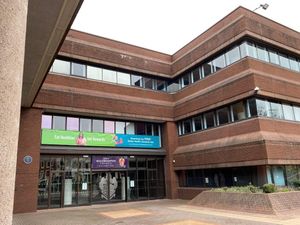Drive to reduce school pupil exclusion rates
Numbers of children in Wolverhampton who are excluded from schools in the city has come under the spotlight, with education bosses striving to reduce figures and ensure alternative provisions are suitable where required.

In a report to the council’s strong families, children and young people scrutiny panel on Wednesday, deputy director of education Brenda Wile said pupils were excluded for a variety of reasons but schools regarded such a move as “a last resort”.
She told members that the highest level for exclusions in the city fell within the 10-15 age group and had increased steadily in the academic years 2020-21 and 2021-22.
“These figures only take us to the end of the academic year for 2022 because the data is published annually, ” said Ms Wile. “As an inclusive city, we feel our schools are a key player in making sure that there are equalities for all children and young people regardless of gender, ethnicity, religion, SEND status etc.
“What we are doing to is to quality assure alternative provisions, in respect of are they suitable for our young people to be placed? Are they appropriate and are they helping them to achieve their goals?
“In terms of exclusion by age range, this has been split into four groups – 0-4, 5-9, 10-15 and 16-17. Statistics show that thankfully we didn’t have any exclusions in the 0-4 age range in either 2020-21 or 2021-22. However, we are concerned that there were 10.6 per cent exclusions in the 5-9 age group in 2020-21 and 10.3 per cent in 2021-22. This data shows us that the exclusion rate for the 5-9 age range is decreasing.
“We have taken action to address this situation because exclusions are a last resort and a move schools don’t take lightly. Often we have challenged schools where we’ve felt they haven’t put in sufficient or appropriate early intervention support for those young people.,” she added.
“We always stress this during workshops and also we are constantly checking the accuracy of our data and making sure that it does tally with what we collect in the city and what we receive from our schools.
“We are about to have a data-sharing agreement with schools which will enable us to get information – not just from the main sector but also academies, free schools, University Technical Colleges (UTCs) – the whole range of designations. And we will be able to cross check this with national data and of course our statistical and regional neighbours.
“When we examine the breakdown between boys and girls, there are far more young males who are excluded than females. This is typical across the country, but you are actually three times more likely to be excluded if you are a young man. I can go back five years and this has remained consistent.
“Looking at exclusions by ethnicity, the highest number were from a white ethnic background, although proportionately it’s lower than the general population of this age group nationally – as 58.4 per cent of the population nationally is white British,” said Ms Wile.
“Asian ethnicity exclusion is quite low, and again this is consistent with previous years. But then we’ve got another increase to black and mixed heritage children which is considerably higher than those of Asian descent. In fact, it is a disproportionately high number of black students that are excluded,
“So we’ve got a lot of work to do in order to see that with our black and mixed heritage children we bring those figures down. We’re very concerned that our white population still have high levels of exclusion, although between those two years we did reduce them by 9.2 per cent which was a big improvement,” she added.
Following the report, several members said that whilst they valued the indication that percentages could give, they would like to see some actual numbers in order to fully understand the scale of the issue.
Ms Wile said that the council was putting an ‘Inclusion Framework’ in place to ensure children and young people gain “access to the right support in the right place at the right time”.




